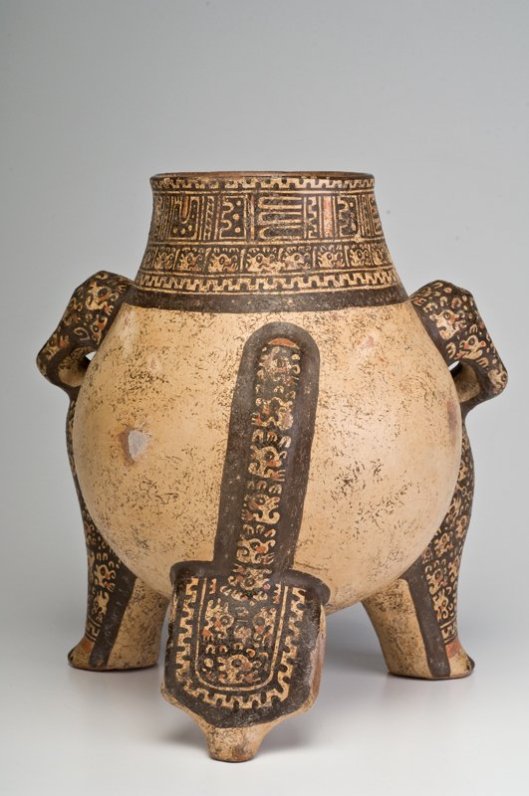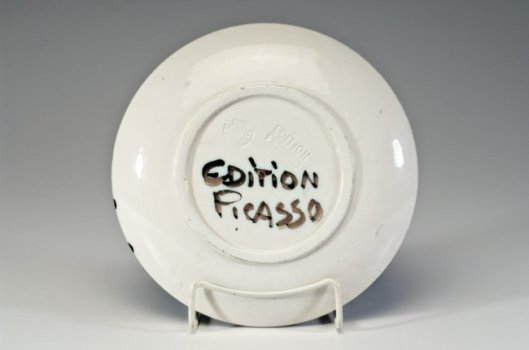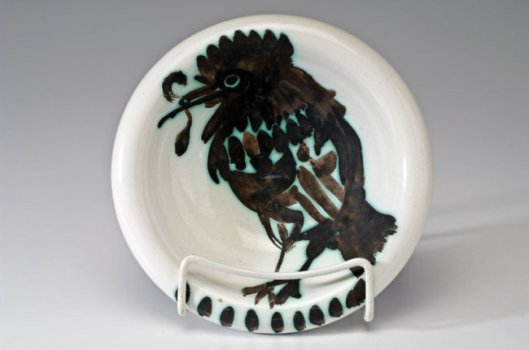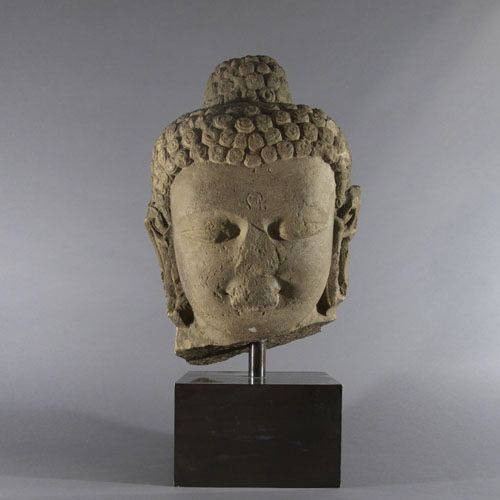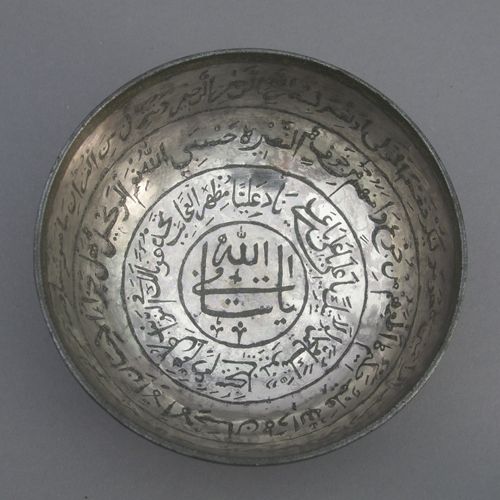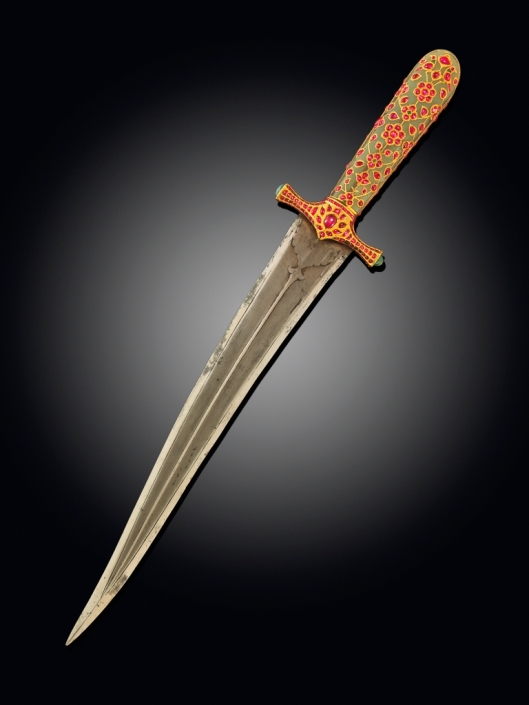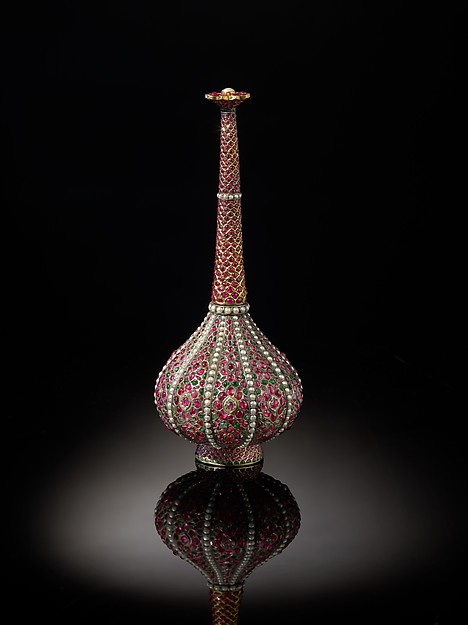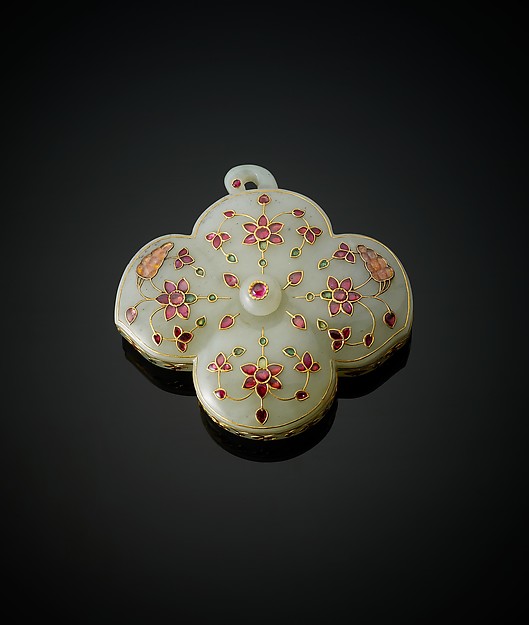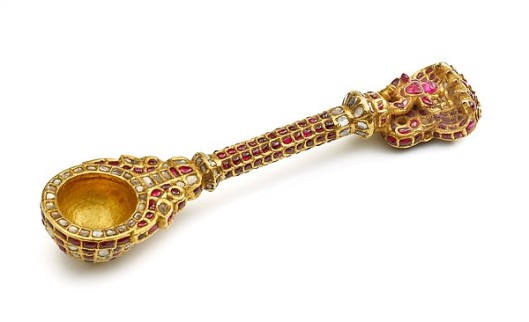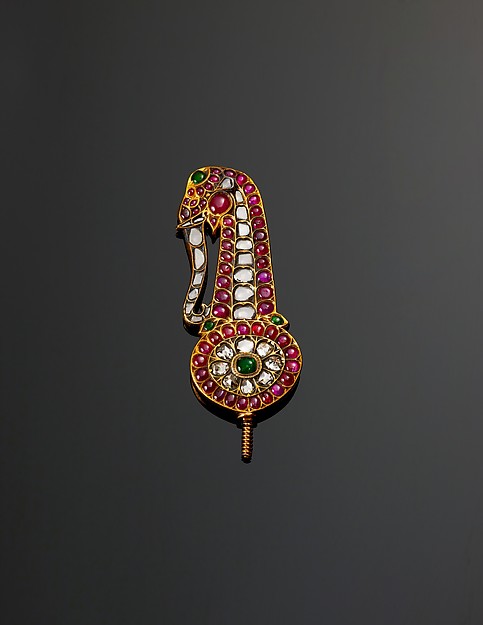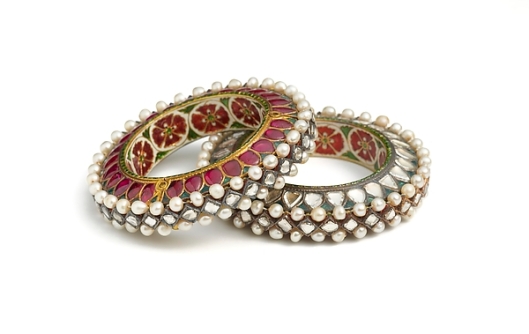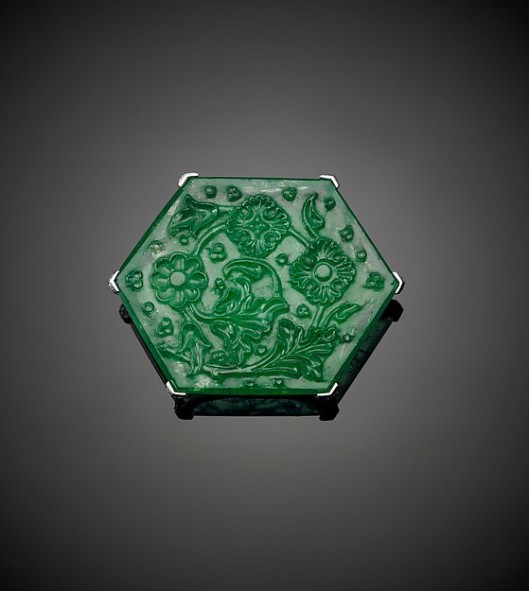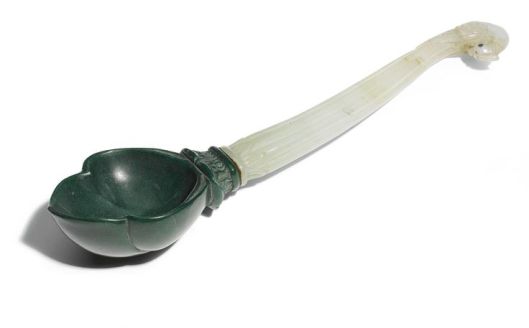
An Exquisite and Very Rare Carved Celadon-Glazed Vase. Qianlong six-character seal mark in underglaze blue and of the period (1736-1795). Height: 8 1/4 inches (22.2 cm). Photo Christie’s Image Ltd 2014
NEW YORK, NY.– The Asia Week New York Association announces that 42 international galleries will participate in Asia Week New York 2015, the nine-day celebration of Asian art and culture that spans the metropolitan region from March 13 through 21, 2015.
Says Carol Conover, Chairman of Asia Week New York: “We look forward to another successful edition of Asia Week New York especially during The Metropolitan Museum of Art’s banner year when it is celebrating the 100th anniversary of its renowned Asian Art Department.”
Joining Asia Week New York for the first time is Shalini Ganendra Fine Art from Malaysia and Navin Kumar Gallery from New York. After a brief hiatus, Dr. Robert Bigler from Zurich and Wei Asian Arts from Brussels return to the fold.
The dealers returning to Asia Week New York with museum-quality works of art from across the Asian continent include:
Indian, Himalayan, and Southeast Asian Art
Art Passages (United States), « Paintings from the Courts of India & Persia« . info@artpassages.com – www.artpassages.com

Dignitaries Visit a Yogini. Kishangarh, India, circa 1750. Asia Week New York | Art Passages

Krishna Gazes at Radha from a Balcony. Kangra, India, circa 1820. 8 1/4 x 5 7/8 inches (20.9 x 14.9 cm. Asia Week New York | Art Passages

Lovelorn Lady Consoled by her Confidant. Garhwal, India, circa 1825. 7 7/8 x 5 5/8 inches (20 x 14.4 cm). Asia Week New York | Art Passages
Buddhist Art (Germany), « From Angkor Wat to the Himalaya« . buddhist.art@hotmail.com – www.buddhist-art.info

Seated Figure of Vishnu. Nepal, 16-17th century. Copper repoussé. 15.3 inches (39 cm). Asia Week New York | Buddhist Art

Head of Buddha. Thailand, Lanna, 14th century. Bronze. 12.6 inches (32 cm). Asia Week New York | Buddhist Art

Portrait of Dondrup Sangpo, Abbott of Drepung Monastery. Tibet, 16th century. Bronze, silver inlay. 8.3 inches (21 cm). Asia Week New York | Buddhist Art
Galerie Hioco (France), « Arts of India, Nepal and Vietnam« . info@galeriehioco.com – www.galeriehioco.com

Bhairava. India, Rajasthan or Uttar Pradesh, 12th century. Sandstone. Height: 32 inches (81 cm). Asia Week New York | Christophe Hioco
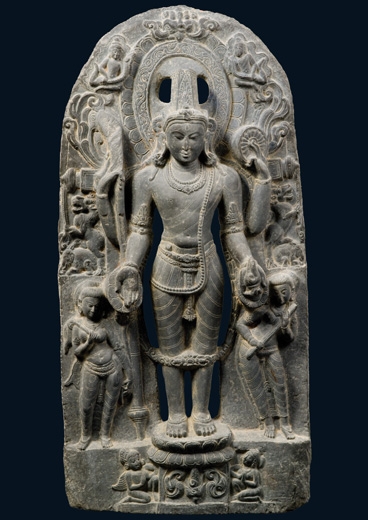
Stele of Vishnu. India, Pala period. Grey schist. Height: 37 inches (94 cm). Asia Week New York | Christophe Hioco

Bronze ewer, ornamented at its base by the head of a makara. Vietnam, Giao Chi Period, 2nd-3rd century. 12.7 x 11 inches (32.5 x 28 cm). Asia Week New York | Christophe Hioco
Nayef Homsi (United States), « Recent Acquisitions ». nayef@nayefhomsi.com – www.nayefhomsi.com

Standing Buddha. India, Gandhara, 2nd century. Grey schist. Height: 30 inches (76.2 cm). Asia Week New York | Nayef Homsi

Jina Parsvanatha. India, Tamil Nadu, Vijayanagar Period, 14th century. Bronze. 14.5 inches (36.8 cm). Asia Week New York | Nayef Homsi

Envoys Pay Homage to King Dasaratha. India, Pahari Region, Garhwal, circa 1800. Opaque watercolor heightened with gold and silver on paper. 16.4 x 21.5 inches (41.5 x 54.7 cm). Asia Week New York | Nayef Homsi
Prahlad Bubbar Ltd. (England), « Indian Court Paintings: Recent Acquisitions, with a Preview of Gianni Berengo Gardin in India« . info@prahladbubbar.com – www.prahladbubbar.com

Guru Gobind Singh (detail). Guler, Punjab Hills, India, circa 1780-90. Opaque watercolor, gold and silver on paper. 8 x 5.6 inches (20.4 x 14.3 cm). Asia Week New York | Prahlad Bubbar

A Spirited Arabesque (detail). Bijapur, Deccan, India, circa 1650. Brush drawing on paper. 8 x 3.7 inches (20.4 x 9.5 cm). Asia Week New York | Prahlad Bubbar

Gianni Berengo Gardin. A Temple Gymnast. Central India, 1977. Gelatin silver archive print. 13 x 9.2 inches (33 x 23.3 cm). Asia Week New York | Prahlad Bubbar
Walter Arader Himalayan Art (United States), « Fine Himalayan Art« . walter.arader@gmail.com – www.himalayanart.com

Tara. China-Tibet, 16th century. Gilt Bronze. 10.5 inches (26.7 cm). Asia Week New York | Walter Arader Himalayan Art

Eleven Faced Avalokitesvara. Tibet, 15th century. Bronze. 12 inches (30.5 cm). Asia Week New York | Walter Arader Himalayan Art

Yama Dharmaraja. China, 18th century. Gilt Bronze. 6.5 inches (16.5 cm). Asia Week New York | Walter Arader Himalayan Art
Carlo Cristi (Italy), « Latest Acquisitions and Central Asian Textiles« . carlocristi@tin.it – www.asianart.com/carlocristi
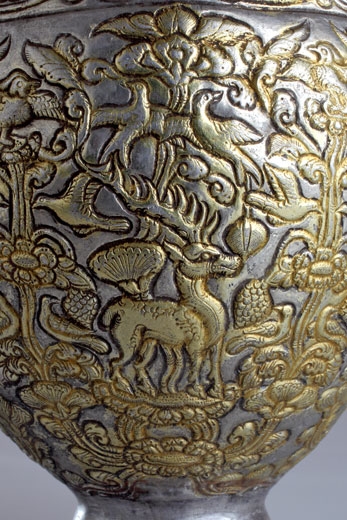
Silver gilt vase (detail). Tibet, 8th century AD. Silver, gilding. Height: 8.5 inches (21.5 cm). Asia Week New York | Carlo Cristi
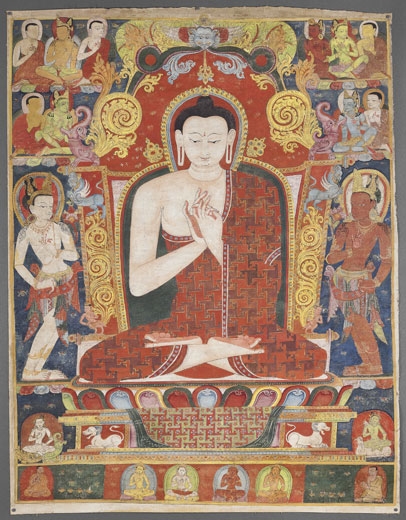
Tangka of Vairocana. Tibet, 13th century. Distemper on cotton. 24.25 x 32.25 inches (62.5 x 82 cm). Asia Week New York | Carlo Cristi
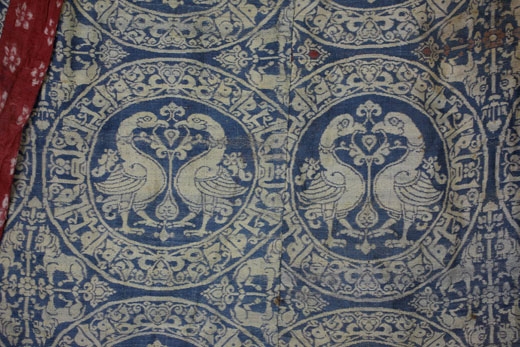
Confronted birds in kufic roundels. Central Asia, 10th-12th century. Polychrome silk. Length: 49.25 inches (125 cm). Asia Week New York | Carlo Cristi
Francesca Galloway (England), « Indian Paintings & Courtly Objects: Recent Acquisitions« . christine@francescagalloway.com – www.francescagalloway.com

By the artist Mola Bagas (or Muhammad Bakhsh). Ladies with Fireworks on a Terrace. Rajasthan, Bikaner, late 18th century. Opaque pigments and gold on paper. 9.5 x 6.4 inches (24.1 x 16.2 cm). Asia Week New York | Francesca Galloway

Khanjar (Dagger). Mughal India, 18th century. White nephrite hilt with inlaid with gold, lasque diamonds and other precious gems. Overall length: 12.6 inches (32 cm). Asia Week New York | Francesca Galloway

A Maharaja with his Two Children. India, Rajasthan, circa 1870-80. Opaque pigments heightened with gold and silver. 22.1 x 16.2 inches (56 x 41.2 cm). Asia Week New York | Francesca Galloway
Oliver Forge and Brendan Lynch Ltd (England), « Indian Painting 1590–1840« . brendan@forgelynch.com – www.forgelynch.com
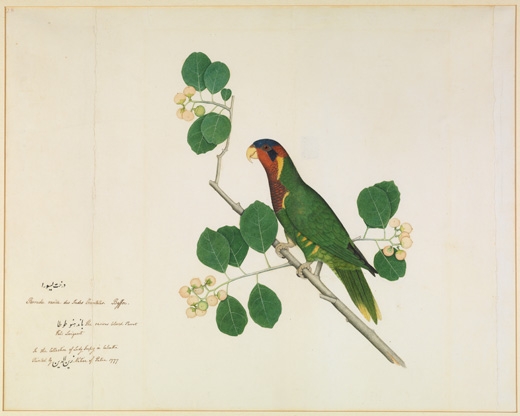
Zain al-Din. The “Various Coloured » Parrot, folio from the Impey Album. Calcutta, India, 1777 A.D. Watercolor and gum arabic on paper. 18.5 x 23.25 inches (47 x 59 cm). Asia Week New York | Oliver Forge & Brendan Lynch Ltd.

A prince seated on a palace terrace. Mughal India, circa 1750-1800. Reverse-painted on mirrored glass. 31 x 19.1 inches (79 x 48.5 cm). Asia Week New York | Oliver Forge & Brendan Lynch Ltd.

Rukhnuddin. A lady playing a vina in a lush garden with peacocks. Bikaner, India, cirac 1680. Opaque watercolor with gold on paper. 6 x 4.6 inches (15.2 x 11.8 cm). Asia Week New York | Oliver Forge & Brendan Lynch Ltd.
Kapoor Galleries (United States), « Wrathful Compassion« . info@kapoorgalleries.com – www.kapoorgalleries.com

Acala. Tibet, 18th century. Parcel Gilt Copper with semi-precious stone inlay. Height: 8.75 inches (22.2 cm). Asia Week New York | Kapoor Galleries

Vasudhara. Nepal, 13th/14th century. Gilt Copper. Height: 7.5 inches (19 cm). Asia Week New York | Kapoor Galleries

Cakrasamvara. Tibet. Mineral pigments and gold on cloth. 25.2 x 33.9 inches (64 x 86 cm). Asia Week New York | Kapoor Galleries
Susan Ollemans (England), « Modern Design in the Ancient World« . ollemans178@btinternet.com – www.ollemans.com
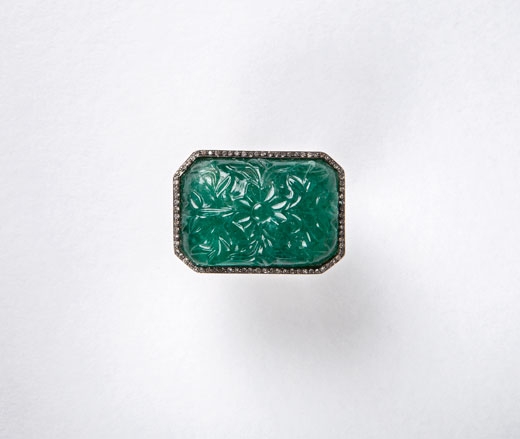
Carved Emerald Ring. India, 17th century. Colombian Emerald. 1.75 x 1 inches (4.5 x 2.5 cm). Asia Week New York | Susan Ollemans

Gold and ruby ring. Central Java, Indonesia, 8th-10th century. Gold and ruby. Length: 1.56 inches (4 cm); Width: .81 inch (2 cm). Asia Week New York | Susan Ollemans

Perfume container. China, Song Dynasty, 960-1279 AD. Gold. Length: 3.75 inches (9.5 cm). Asia Week New York | Susan Ollemans

Gyalpo Pehar. Mongolia, 17th/18th century. Silver with remains of cold-gilding and polychrome. Height: 6.25 inches (15.9 cm). Asia Week New York | Carlton Rochell Asian Art

Vishnu and His Consorts. Eastern India, West Bengal/Bangladesh Pala period, 11th century. Copper alloy. Height: 16.25 inches (41.2 cm). Asia Week New York | Carlton Rochell Asian Art

Torso of a Jina. North India, 11th/12th century. Burnished sandstone. Height: 33 inches (83.8 cm). Asia Week New York | Carlton Rochell Asian Art
Dalton Somaré (Italy), « New Acquisitions« . info@daltonsomare.com – www.daltonsomare.com

Head of the Buddha. Greater Gandhara, 3rd century. Schist. 14.1 inches (35.8 cm). Asia Week New York | Dalton Somaré

Padmapani. Swat Valley, Pakistan, circa 7th century. Bronze. Height: 10.1 inches (26 cm). Asia Week New York | Dalton Somaré

Head of the Buddha. Greater Gandhara, circa 7th century. White marble. 15.7 inches (40 cm). Asia Week New York | Dalton Somaré
Jonathan Tucker Antonia Tozer (England), « An Important Group of Sculptures from India and Southeast Asia« . jonathantucker1@aol.com – www.asianartresource.com

Standing Schist Bodhisattva. Northwest Pakistan, Gandhara, 2nd-3rd century A.D. Grey schist. Height: 28 inches (71 cm). Asia Week New York | Jonathan Tucker Antonia Tozer

Sandstone Salabanjika. Central India, probably Madhya Pradesh, 10th-11th century. Red sandstone. 43 inches (109 cm). Asia Week New York | Jonathan Tucker Antonia Tozer

Stucco Seated Buddha. Northwest Pakistan, Gandhara, 4th-5th century. Stucco. Height: 20.5 inches (52 cm). Asia Week New York | Jonathan Tucker Antonia Tozer
Nancy Wiener Gallery (United States), « Recent Acquisitions« . nancywienergallery@mac.com – www.nancywiener.com

Attributed to Manaku or Fattu. A Folio from the “Large Bhagavata Purana.” India, Guler, circa 1760-65. Gouache and gold on paper. Painting 9.75 x 13 inches (23.5 x 33.2 cm); Folio 11.6 x 16 inches (29.5 x 40.2 cm). Asia Week New York | Nancy Wiener Gallery

Head of Avalokiteshvara. India, 11th century, Pala period. Black Stone. 9.5 inches (24 cm). Asia Week New York | Nancy Wiener Gallery

Portrait of a Sakya Lama (Detail). Tibet, 18th century. Mineral pigment and gold on cloth. 77 x 63 inches (195 x 160 cm). Asia Week New York | Nancy Wiener Gallery
Ancient and/or Contemporary Chinese Art
U.S. galleries include:
Andrew Kahane, Ltd., « Chinese Ceramics and Works of Art« . kahaneasia@aol.com – www.artasianappraisers.com

Meiping. China, 13th century. Glazed stoneware. Height: 12.5 inches (30 cm). Asia Week New York | Andrew Kahane, Ltd.

Longquan celadon lotus bowl. China, Southern Song Dynasty, late 12th-13th century. Diameter: 6.5 inches (16.5 cm). Asia Week New York | Andrew Kahane, Ltd.

Northern black glazed russet splashed pear shaped vase. China, Northern Song-Jin Dynasty, 12th-early 13th century. Height: 13 inches (32.8 cm). Asia Week New York | Andrew Kahane, Ltd.
Asian Art Studio, « Noble Treasures« . asianartstudio@msn.com – www.asianartstudio.com

Rare imperial rectangular white jade seal carved with crouching dragon. China, Yuan Dynasty. Jade. Length: 2.25 inches (5.5 cm); Width: 1.8 inches (4.7 cm). Asia Week New York | Asian Art Studio

A hardstone and hongmu desk screen painted with figures in a mountainous landscape. China, late 19th century. 15 x 10.5 inches (38 cm). Asia Week New York | Asian Art Studio

A well hollowed agate snuff bottle, carved with flowers and trees by rockwork. China, 1750-1860. Height: 2.25 inches (5.8 cm).
Ralph M. Chait Galleries, Inc., « Spring Exhibition of Chinese Porcelain and Works of Art« . info@rmchaitgal.net – www.rmchait.com

Bronze Figure of a Seated Buddha. China, Ming dynasty, circa 15th/16th century. Bronze. Height: 19.25 inches (48.9 cm). Asia Week New York | Ralph M. Chait Galleries, Inc.

Underglaze red and blue baluster vase, decorated with the Eight Horses of Mu Wang. China, early Kangxi period, circa late 17th century. Porcelain. Height: 16.25 inches (48.3 cm). Asia Week New York | Ralph M. Chait Galleries, Inc.

Large red glazed vase, of rounded form and sang de boeuf color glaze with fine crackle. China, 18th/early 19th century. Porcelain. Height: 14 inches (35.6 cm). Asia Week New York | Ralph M. Chait Galleries, Inc.
China 2000 Fine Art, « To See a World in a Grain of Sand« . c2000fa@aol.com – www.china2000fineart.com

Lingbi Scholar Rock with Carved Marble Base. China, Ming dynasty. Lingbi stone and marble. Rock: 22.75 (Height) x 14.75 (Width) x 4.75 (Depth) inches (57.8 x 37.4 x 12 cm). Asia Week New York | China 2000 Fine Art

Zhang Ling. Exchanging the White Goose for the Classic Text. China, late 15th/early 16th century, Ming dynasty. Ink and color on paper. 27 x 1.5 inches (68 x 26.8 cm). Asia Week New York | China 2000 Fine Art

Xie Zhiguang (1899-1976). Appreciating the Plum Blossom. China, 20th century. Ink and color on paper, hanging scroll. 53.5 x 11.75 inches (136 × 30 cm). Asia Week New York | China 2000 Fine Art
The Chinese Porcelain Company, « Chinese Contemporary Ink Painting« . cplumhoff@chineseporcelainco.com – steo@chineseporcelainco.com – www.chineseporcelainco.com

Tai Xiangzhou. Paradise Mountain. China, 2012. Ink on silk. 23.9 x 126.25 inches (60.6 x 320.7 cm). Asia Week New York | The Chinese Porcelain Company

A Yueyao Glazed Funerary Jar. Western Jin Dynasty, 265 – 316 AD. Height: 17 1/2 inches (44.45 cm); Diameter: 9 3/4 inches (24.77 cm). Asia Week New York | The Chinese Porcelain Company
Gisèle Croës (Belgium), « Matter and Memory« . art@giselecroes.com

Bodhisattva Head. China, Northern Qi Dynasty (550-577). Limestone. Height: 10.5 inches (29 cm). Asia Week New York | Gisèle Croës s.a.

Archaic bronze vessel, Gu. China, Shang Dynasty (1600-1050 BC), Anyang Culture (1300-1050 BC), 12th century BC. Bronze with green, blue and brown patina; malachite and cuprite crystallisation; traces of textile. Height: 12.4 inches (31.5 cm). Asia Week New York | Gisèle Croës s.a.

Gold animal mask. China, Warring States period (481 – 221 BC). Width: 4.25 inches (11 cm). Asia Week New York | Gisèle Croës s.a.
Michael C. Hughes LLC, « Recent Acquisitions – Chinese Works of Art« . mhughesllc@earthlink.net

An Eastern Zhou Dynasty style vessel, gui. Probably Ming Dynasty. 5.3 inches across (13.5 cm). Asia Week New York | Michael C. Hughes LLC

A Nephrite jade snuff bottle. Master of the Rocks school, 1760-1850. Height without stopper: 2.7 inches (7 cm). Asia Week New York | Michael C. Hughes LLC
Jadestone, « Diminutive and Dynamic: Miniature Chinese Snuff Bottles and Works of Art« . info@jadestonegallery.com – www.jadestonegallery.com

Famille Rose Snuff Bottle. China, Qianlong Mark and Period. Enameled porcelain. Height: 1.4 inches (3.6 cm). Asia Week New York | Jadestone

Miniature Famille Rose Incense Burner. China, Qianlong-Jiaqing Period. Enameled porcelain. 2 x 2 inches (5.2 x 5.2 cm). Asia Week New York | Jadestone

Openwork-Carved Jade Toggle with Russet Skin. China, Qing Dynasty. 1.7 x 1.4 x 0.8 inches (4.5 x 3.6 x 2 cm). Asia Week New York | Jadestone
Kaikodo LLC, « The Immortal Past« . asianart@kaikodo.com – www.kaikodo.com
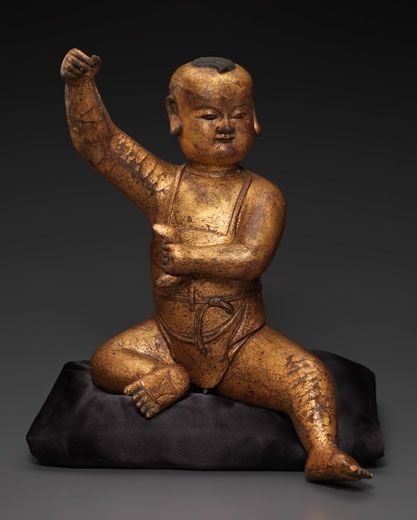
Gilt-Lacquered Wood Figure of a Seated Boy. China, Song-Yuan Dynasty, 13th-14th century. Height: 15 inches (38 cm). Asia Week New York | Kaikodo LLC

Gilt-Silver Wine-Drinking Game Set. “The Analects Jade Candle” with inscribed “drinking strips.” China, Tang Dynasty, 8th century. Height: 10 inches (25.4 cm). Asia Week New York | Kaikodo LLC
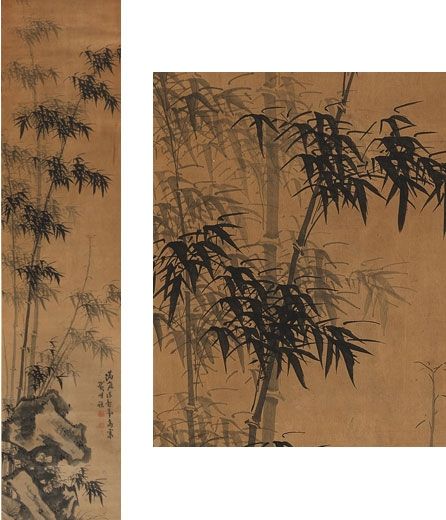
Dai Mingyue (1625-1670). Bamboo and Rock. Hanging scroll, ink on satin. 31.5 x 18.5 inches (80 x 47 cm). Asia Week New York | Kaikodo LLC
J.J. Lally & Co., « Chinese Archaic Bronzes: The Collection of Daniel Shapiro and Ancient Chinese Sculpture: Recent Acquisitions ». staff@jjlally.com – www.jjlally.com

Bronze Ritual Vessel (Gong). China, Shang Dynasty, circa 1200 B.C. Height: 10 5/8 inches (27 cm); Length: 11 3/4 inches (30.1 cm). Asia Week New York | J. J. Lally & Co.

Bronze Ritual Vessel (Fangding). China, Early Western Zhou Dynasty, 11th century B.C. Height: 10 3/4 inches (27.3 cm). Asia Week New York | J. J. Lally & Co.

Gilt Bronze Figure of the Bodhisattva Guanyin. China, Tang Dynasty, 8th century. Height: 10 inches (25.5 cm). Asia Week New York | J. J. Lally & Co.
M. Sutherland Fine Arts, Ltd., « Chinese Contemporary Painting: New Works by Hai Tao« . info@msutherland.com – www.msutherland.com

Hai Tao. Landscape Number 1. China, 2012. Ink on paper. Asia Week New York | M. Sutherland Fine Arts, Ltd.

Hai Tao. Melodious Apparition. Nanjing, China, 2010. Ink on rice paper. 12.75 x 10.1 inches (32.4 x 25.7 cm). Asia Week New York | M. Sutherland Fine Arts, Ltd.

Hai Tao. Rising Tide. Nanjing, China, 2010. Ink on rice paper. 12.75 x 10.25 inches (32.4 x 26 cm). Asia Week New York | M. Sutherland Fine Arts, Ltd.
Nicholas Grindley Works of Art Ltd, « Chinese Furniture and Scholars’ Objects« . nick@nicholasgrindley.com – rebecca@nicholasgrindley.com – www.nicholasgrindley.com

Huanghuali yoke back armchair with a backward sloping yoke. China, Late Ming dynasty, 16th century. Huanghuali wood. Height 42.5 x Width 23.5 x Depth 24 inches (107.9 x 59.7 x 61 cm). Asia Week New York | Nicholas Grindley Works of Art Ltd

Huanghuali inset leg bridle joint table. China, Late Ming, early Qing dynasty, 17th century. Huanghuali wood. Height 31.75 x Width 95.25 x Depth 21.25 inches (80.6 x 242 x 54 cm). Asia Week New York | Nicholas Grindley Works of Art Ltd

Duan inkstone contained within a nanmu box. China, Qing dynasty, 17th/18th century. Length 3.5 x Width 3 x Depth .5 inches(8.9 x 7.6 x 1.3 cm). Asia Week New York | Nicholas Grindley Works of Art Ltd
Zetterquist Galleries, « Early Chinese Ceramics: Monochromes« . inquiries@zetterquist.com – www.zetterquist.com
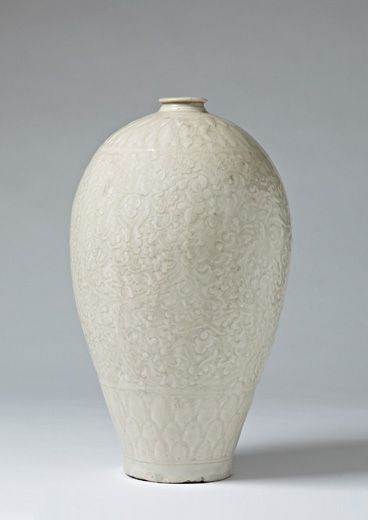
Large and Important Carved Mei-ping. China, Northern Song Dynasty (960–1127 A.D.). Porcelaineous Stoneware. Height: 15.3 inches (39cm). Asia Week New York | Zetterquist Galleries

Large Yaozhou Game Box. China, Northern Song Dynasty (960–1127 A.D.). Ceramic. Diameter: 4.9 inches (12.5cm). Asia Week New York | Zetterquist Galleries

Large Longquan Celadon Twin Fish Bowl. China, Southern Song–Yuan Dynasty (13th–14th century A.D.). Ceramic. Diameter: 7.9 inches (20cm). Asia Week New York | Zetterquist Galleries
Ancient and/or Contemporary Japanese Art
Carole Davenport (United States), « BCE TO NOW – Masterworks from Japan and China« . carole@caroledavenport.com – www.caroledavenport.com

Kasuga Deer Mandala. Japan, Muromachi Period, circa 1500. Silk. 35 x 14.5 inches (89 x 36.8 cm). Asia Week New York | Carole Davenport
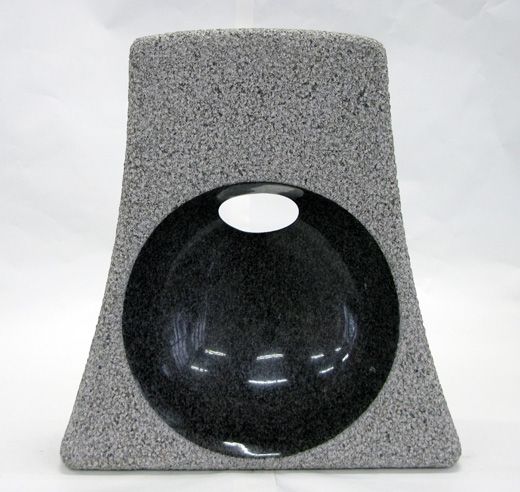
Hiroyuki Asano. Sunset Mt. Fuji. Japan, 2013. Black impala granite from South Africa. Height: 14.6 inches (37 cm). Asia Week New York | Carole Davenport
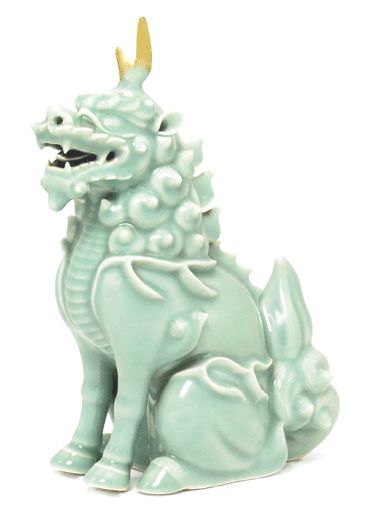
Okimono of a kirin. 18th century. Porcelain with celadon glaze, Nabeshima kiln. 11.5 inches high. Asia Week New York | Carole Davenport
Dai Ichi Arts, Ltd. (United States), « Jewels for Homes« . info@daiichiarts.com – www.daiichiarts.com
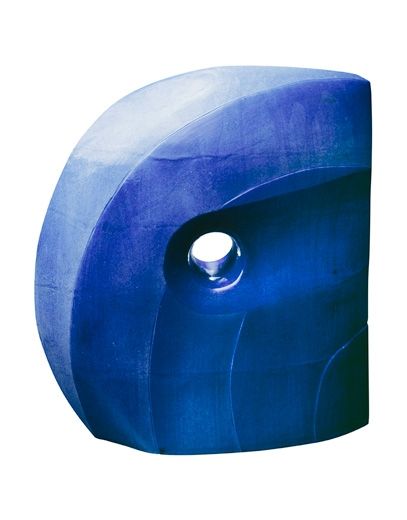
Miyanaga Tozan III. On the Way. Japan, circa 2004. Cobalt glazed porcelain. 20 x 17.3 x 7.4 inches (50.8 x 43.9 x 18.8 cm). Asia Week New York | Dai Ichi Arts, Ltd.

Kaneshige Kosuke. Saint’s Garment No.5. Japan, 2004. Wood-fired bizen stoneware. 16 x 19 x 13 inches (40.6 x 48.3 x 33 cm). Asia Week New York | Dai Ichi Arts, Ltd.

Otto Akob. Gold Coral and Pearl Earrings: Shells. Germany, 1986. 18kt gold, orient pearls, coral enamel. 1.25 x 0.8 inches (3.1 x 2 cm). Asia Week New York | Dai Ichi Arts, Ltd.
Joan B. Mirviss, Ltd. (United States), « Japan in Black and White: Ink and Clay« . info@mirviss.com – www.mirviss.com

Yashima Gakutei. Surimono woodblock print. Japan, 1830. 8 x 7 inches (20.3 x 17.8 cm). Asia Week New York | Joan B. Mirviss, Ltd

Yagi Kazuo. Asymmetrical sculpted vessel. Japan, circa 1970. Glazed stoneware. 8.75 x 8.25 x 7.88 inches (22.2 x 21 x 20 cm). Asia Week New York | Joan B. Mirviss, Ltd

Maruyama Ôkyo. Moon Over Waves. Japan, 1777. Ink on silk. 39.25 x 12.6 inches (99.7 x 32.1 cm). Asia Week New York | Joan B. Mirviss, Ltd
Onishi Gallery (United States), « Heritage: Contemporary Japanese Ceramics and Other Interior Objects« . nana@onishigallery.com – www.onishigallery.com

Tokuda Yasokichi III. Plate Kamon (Floral). Japan, 2000. Porcelain with vivid colored glaze (yôsai). 3.9 x 21.9 inches (10 x 55.5 cm). Asia Week New York | Onishi Gallery

Tokuda Yasokichi III. Plate Shin-en (Calm). Japan, 1992. Porcelain with vivid colored glaze (yôsai). 3.3 x 21.5 inches (8.5 x 54.5 cm). Asia Week New York | Onishi Gallery

Maeda Hideo. Flower vessel with geometric pattern. Japan, 2013. Stoneware with inlay. 16.7 x 12.4 inches (42.5 x 31.5 cm). Asia Week New York | Onishi Gallery
Scholten Japanese Art (United States), « Erotic Art of Japan: Everybody’s Doing It« . info@scholten-japanese-art.com – www.scholten-japanese-art.com

Suzuki Harunobu (circa 1725-70). Teahouse waitress and a lover in an intimate embrace. Japan, circa 1768. Woodblock print. 8 1/8 x 11 1/8 inches (20.5 by 28.2 cm). Asia Week New York | Scholten Japanese Art

Suzuki Harunobu (ca. 1724-70). A beauty watching a couple drinking sake, from the The Spell of Amorous Love (Enshoku koi no urakata). Japan, circa 1766-70. Woodblock printed chuban orihon (folded illustrated book). 7.5 x 5.125 inches (19.2 x 13 cm). Asia Week New York | Scholten Japanese Art

Kikugawa Eizan (1787-1867). Young Lovers at the New Year, from the series Selections from the Brocade Quarters (E-awase Kinkaisho). Japan, circa 1815. Woodblock print. 10.125 x 14.625 inches (25.7 x 37.2 cm). Asia Week New York | Scholten Japanese Art
Erik Thomsen (United States), « Japanese Paintings and Works of Art« . info@erikthomsen.com – www.erikthomsen.com

Suzuki Shônen (1849-1918). Pines (detail). Japan, Meiji era (1868-1912), circa 1910. Ink on gold leaf. 67.5 x 147.5 inches (171.5 x 374.5 cm) each. Asia Week New York | Erik Thomsen

Katsudô Eiryrû (act. 1790s). Ensô Bijin. Japan, Edo Period (1615-1868), 1790s. Ink and mineral colors on silk. 55 x 22.5 inches (139.3 x 56.8). Asia Week New York | Erik Thomsen

Rinpa School. Flowers of the Season by Meandering Stream. Japan, Meiji era (1868-1912). Ink, mineral colors, gofun and gold on paper with gold leaf. 66.25 x 74 inches (169.5 x 188 cm). Asia Week New York | Erik Thomsen
Hiroshi Yanagi Oriental Art (Japan), « Japanese Art Highlights« . h-yanagi@art.plala.or.jp – www.h-yanagi.com

Standing Amida Nyorai. Japan, Kamakura Period, 13th century. Cypress wood. Height: 9 inches (23 cm). Asia Week New York | Hiroshi Yanagi Oriental Art

Maruyama Okyo. Turtles. Japan, Edo Period, 1785. Hanging scroll, ink and color on silk. 35.4 x 15.75 inches (90 x 40 cm). Asia Week New York | Hiroshi Yanagi Oriental Art

Miyagawa Choshun. Nikuhitsu Ukiyo-e: Figures. Japan, Edo Period, 18th century. Six-fold screen, ink and color on silk. Each painting 30.9 x 13.2 inches (78.4 x 33.6 cm). Asia Week New York | Hiroshi Yanagi Oriental Art
BachmannEckenstein (Switzerland). « Japanese Art | Pre-Modern and Beyond« . email@bachmanneckenstein.com – www.bachmanneckenstein.com

Otagaki Rengetsu (1791-1875). Dish. Japan, 19th century. Glazed ceramic. 6.2 x 4 inches (15.7 x 10 cm). Asia Week New York | BachmannEckenstein JapaneseArt

Ikeno Taiga (1723-1776). Landscape – Hanging Scroll. Japan, Edo Period, 18th century. Ink and color on paper. 49 x 10.9 inches (124.5 x 27.6 cm); Scroll: 80.3 x 16.5 inches (204 x 42 cm). Asia Week New York | BachmannEckenstein JapaneseArt

Hine Taizan (1813-1869). Landscape – Hanging Scroll. Japan, Meiji Period, dated 1868. Ink on paper. 44.5 x 12.3 inches (113.1 x 31.2 cm); Scroll: 76.8 x 17.1 inches (195 x 43.5 cm). Asia Week New York | BachmannEckenstein JapaneseArt
Giuseppe Piva Japanese Art (Italy). « Yūgen: The Subtle Profundity of Japanese Art« . info@giuseppepiva.com – www.giuseppepiva.com

Otagaki Rengetsu (1791-1875). Hare. Signed Rengetsu. Ceramic okimono with calligraphic inscription. Height: 7.9 inches (20 cm). Asia Week New York | Giuseppe Piva Japanese Art

A small hokai box with Kodai-ji Maki-e Design with Autumn Plants. Japan, Momoyama Period, late 16th century. 7.7 x 8.3 x 8.3 inches (19.5 x 21 x 21 cm). Asia Week New York | Giuseppe Piva Japanese Art

Kei School. Nikko Bosatsu. Japan, Nanbokucho Period (1336-1392). Wood sculpture with colored pigments and gold-leaf decoration. Height: 19.7 inches (50 cm). Asia Week New York | Giuseppe Piva Japanese Art
Ancient and contemporary Korean
Kang Collection Korean Art and Koo New York, both from the United States, round out the contributors presenting the extraordinary array of Asian art treasures on view.
Kang Collection Korean Art (United States). « Ik-Joong Kang: Bamboo/Wind« . info@kangcollection.com – www.kangcollection.com

Ik-Joong Kang. White Moon Jar. Korea, 2011. Mixed media on wood. 37.75 x 37.75 inches (96 x 96 cm). Asia Week New York | Kang Collection Korean Art
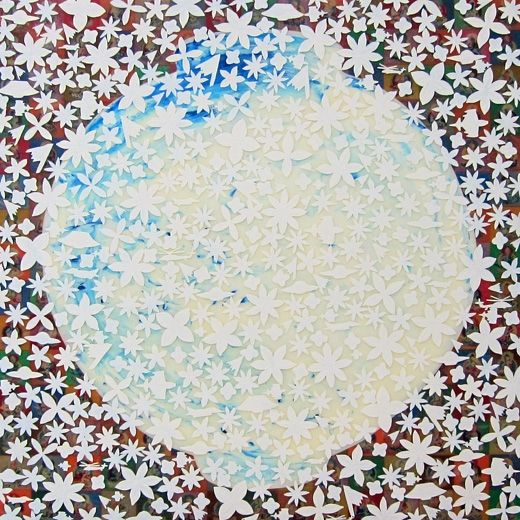
Ik-Joong Kang. Samramansang Moon Jar. Korea, 2010-2013. Mixed Media on Wood. 47 x 47 inches (119.4 x 119.4 cm). Asia Week New York | Kang Collection Korean Art

Ik-Joong Kang. Blue Chrysanthemum Moon Jar. Korea, 2011. Mixed Media on Wood. 47 x 47 inches (119.4 x 119.4 cm). Asia Week New York | Kang Collection Korean Art
Koo New York (United States). « Korean Traditions: Arts of the Interior« . info@koonewyork.com – www.koonewyork.com

Anonymous. Cranes Gathering in Daoist Western Paradise. Korea, Annexation Period (1910-45). Eight-Panel Screen; colors on silk, mounted on brocade. Overall: 74.5 x 127.25 inches (153 x 323.4 cm). Asia Week New York | KooNewYork
To celebrate the 2015 edition of Asia Week New York, which offers a non-stop schedule of gallery open houses, auctions, exhibitions, lectures, symposia and special events, a private, invitation-only reception will once again take place at The Metropolitan Museum of Art on March 16.
A comprehensive guide with maps will be available at participating galleries, auction houses and cultural institutions, starting February 2015 and online at asiaweekny.com. Emphasizing the strength of interest from Chinese-speaking buyers, a Chinese version of the website is available at cn.asiaweekny.com.













